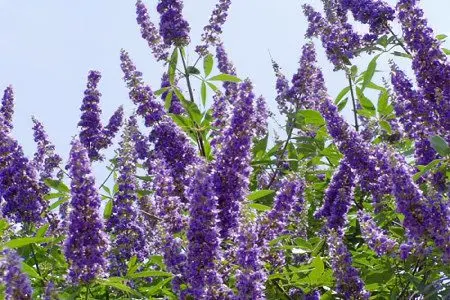Sacred vitex (lat. Vitex Agnus-Castus) is a medicinal plant belonging to the large Lamiaceae family. Scientists have described more than 250 types of vitex, but the most popular is sacred vitex, which is used to treat a variety of health problems.
What is vitex?

Vitex sacred is a tall tree-like shrub. This plant can be up to four meters in height. The root system of Vitex is highly branched, has many adventitious roots. The brown tetrahedral stem is straight. The leaves of the plant are opposite, they are green. Each leaf consists of 5 leaflets, which are pointed and do not have stipules. Thick spike-shaped panicles appear before us as vitex inflorescences. The plant during the flowering period is covered with many beautiful flowers – lilac, purple or pink. The fruit of Vitex is a drupe in the form of a ball, black in color, the size of the drupe does not exceed 4 mm.
Traditional medicine is more familiar with other names for vitex – the tree of chastity, Abraham’s tree, common prutnyak. From South Asia and the Mediterranean, Vitex quickly spread to European countries, North Africa, India, Israel, and China. In Russia, the tree of chastity is found on the southern coast of Crimea, Transcaucasia.
June-August is the period of flowering of the sacred vitex. Vitex fruits ripen from early September to late October. The plant has a very strong, but at the same time pleasant aroma.
Of the many varieties of vitex, the sacred vitex is the most valuable. And if in the Middle Ages the fruits of the chastity tree were used to suppress male libido, then at present compositions for treatment are prepared from all parts of vitex:
premenstrual syndrome.
Menopause.
infertility.
Diseases that negatively affect the reproductive functions of women.
Many ancient Greek recipes with vitex are relevant in the modern world. Turkish medicine uses vitex as part of a complex treatment for diseases of the digestive system, nervous system, fungal infections. [1].
[Video] Medicinal plants of July “Sacred Vitex”:









